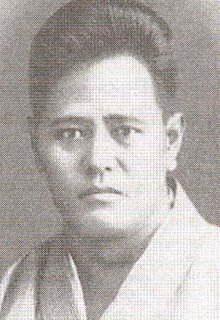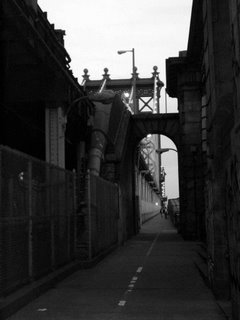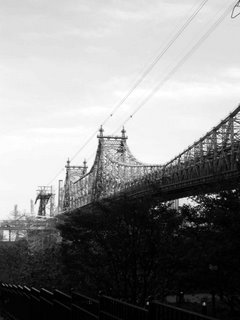 New Jersey side of the George Washington Bridge
New Jersey side of the George Washington BridgeI couldn't have picked a finer day to return to the road Sunday.
After a layoff of more than a month, I did my familiar 12-mile urban hike from North Jersey to Manhattan's East Village and partway back.
The sky was a beautiful cerulean blue and the temperature was in the 50s. Corny as it may sound, it was almost as if Mother Nature were welcoming me back.
Welcoming me and a hundred thousand other people, most of them cyclists.
In bloom along the river path
The pedestrian/cycle path over the George Washington Bridge is about 10 feet wide, which seems quite narrow on a fine day when the volume of walkers and cyclists is high.
Many cyclists seem to feel a sense of entitlement to the lion's share of the path.
Usually, it's the cyclists in the regulation togs -- the matching team jerseys, aerodynamically designed helmets and so on -- who are the biggest offenders.
They ride two abreast, sometimes three.
They seem to feel they're betraying their image if they're not traveling at maximum speed over the bridge, even if traffic volume and common sense dictate otherwise.
They zip by pedestrians and fellow cyclists with no warning of "Coming up behind you" or "Coming up on your left."
Their anger and frustration are palpable when they apply the brakes to avoid hitting a walker or jogger well within the confines of that part of the path clearly marked for pedestrians.
They wouldn't give you the steam off their piss if you were freezing to death.
I think cycling is a fine sport and great exercise. I used to do a lot of it myself until I allowed neglect to turn my mountain bike into a rust bucket.
All we need is a little more sharing of the road.
 A "Mr. Driftwood" opus
A "Mr. Driftwood" opusOn my usual walk down the path along the Hudson River, I passed sign after sign that the sculptor known as
"Mr. Driftood" had been hard at work. We must've just missed each other. He left about 15 sculptures in his wake. The one above is among the more cryptic.
The last time we saw each other was on a frigid Sunday in mid-February when the icy wind off the river made stopping to chat even for a few minutes a painful endeavor.
I wonder if we would recognize each other without our cold-weather gear.
 Along Riverside Drive
Along Riverside DriveFrom the river path, I walked east to Riverside Drive, headed down a few blocks and then east to Broadway for lunch at a favorite diner.
Then I walked east through Central Park.
When the weather is so gorgeous that staying indoors violates a law of Nature, Central Park teems with walkers, joggers, inline skaters, horse-drawn carriages, street musicians, panhandlers, chess players, people watchers, Frisbee tossers, promenaders, shutterbugs, boaters, picnickers, thinkers, doers, saints and sinners.
No matter how much of a rush you're in upon entering the park, the crowds and the scenic beauty force you to slow down.




































